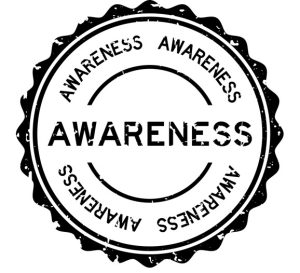Title
Differences between IADC and IWCF Well Control Certificates – June 2023
Picture
Attached
“Well control training should enable participants to receive and develop role- and operation- specific well control knowledge, and to learn and practice well control skills.” – IOGP Report 476
Let’s take a step back – how were IADC and IWCF formed? The International Association of Drilling Contractors (IADC) is an organization that represents the collective interests of drilling contractors in the industry. Established in 1940 by a group of forward-thinking individuals, IADC was founded with the belief that drilling contractors required a unified voice to
champion their concerns. Over the years, IADC has successfully navigated significant changes within the industry, evolving into the influential and contemporary association it is today.
Operating across six continents, IADC boasts a membership comprised of global leaders in the drilling sector that have gained worldwide recognition for their accreditation programs, publications, conferences, and advocacy efforts. IADC’s primary objective is to promote the crucial role of the Oil and Gas industry in facilitating the global economy while upholding high standards of safety, environmental stewardship, and operational efficiency.
The International Well Control Forum (IWCF) is a not-for-profit membership organization that was established in 1992. Their primary focus is on the development and administration of well control training, assessment, and certification programs specifically designed for the oil and gas industry’s exploration and production sector. IWCF maintains close partnerships with national regulatory bodies and collaborates with influential industry leaders such as the International Association of Oil and Gas Producers (IOGP). Building upon the recommendations provided in IOGP’s Report 476, IWCF has recently implemented new syllabi for
their Drilling Well Control and Well Intervention Pressure Control programs. These revised programs are structured across five levels to ensure that employees possess the essential skills required for their respective roles. By providing certified training through accredited centers, IWCF’s ultimate goal is to proactively prevent well control incidents.
The delivery of IWCF programs is facilitated by a worldwide network of accredited centers. All assessments are meticulously organized by IWCF and are conducted in a closed-book format. To ensure adherence to proper practices, independent invigilators are appointed to oversee the assessments and maintain the integrity of the certification process.
Differences between IADC and IWCF Well Control Certificates
IWCF and IADC share a common goal of providing the global oil industry with comprehensive qualifications in the field of well control. Both certifications are highly regarded worldwide and hold significant value in the industry. IWCF, headquartered in the United Kingdom, was established in Europe as a not-for-profit organization in 1992. Its primary utilization is observed in Europe, Asia, and certain regions of the Middle East.
On the other hand, IADC, originally founded in 1940 as the International Association of Drilling Contractors, began accrediting well control training programs in 1993. IADC’s influence is predominantly seen across the Americas and in certain parts of the Middle East.
While both IWCF and IADC adhere to industry recommendations for role-specific well control training programs and certification, they adopt slightly different approaches. IWCF offers certification across Levels 1 to 5, whereas IADC provides certification from Introductory to Supervisory Levels. IWCF implements multiple assessments for each level of training, while IADC conducts a single theoretical assessment per level covering various topics and both organizations maintain extensive question banks to evaluate the learners’ knowledge.
Furthermore, there are variations in the administration and management of classes between IWCF and IADC. For instance, IWCF allows Drillers enrolled in a Level 3 course to share the same classroom with Drilling Supervisors pursuing a Level 4 course, whereas IADC does not permit such mixing. Additionally, there are disparities in registration deadlines, venue accreditation criteria, and maximum class sizes based on the availability of instructors and/or simulators.
IADC’s WellSharp, which originated in the United States and is utilized by numerous American companies. Another prominent program is the IWCF assessment and certification initiative, which was initiated in Europe. Although there are some differences between the two systems, their fundamental objective and the level of training they provide exhibit many similarities. Both IWCF and IADC’s basic well control programs adequately meet the requirements for their primary target audience, which includes key drill crew personnel. These programs are designed for conventional wells where traditional well control techniques are sufficient.






